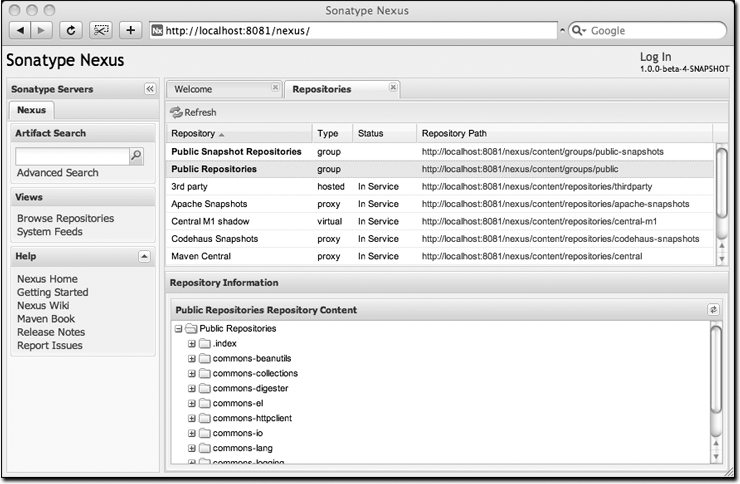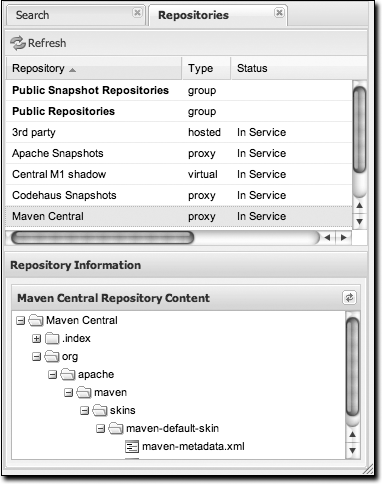Using Nexus
Nexus provides for anonymous access for users who only need to search repositories, browse repositories, and peruse the system feeds. This anonymous access level changes the navigation menu and some of the options available when you right-click on a repository. This read-only access displays a user interface shown in Figure 16-2.

Figure 16-2. Nexus interface for anonymous users
Browsing Repositories
One of the most straightforward uses of the Nexus is to browse the structure of a Maven repository. If you click on the Browse Repositories menu item in the Views menu, you should see the display shown in Figure 16-3. The top half of the figure shows you a list of groups and repositories along with the type of the repository and the repository status.

Figure 16-3. Browsing a Nexus repository
When you are browsing a repository, you can right-click on any file and download it directly to your browser. This allows you to retrieve specific artifacts manually or examine a POM file in the browser.
Note
When browsing a remote repository, you might notice that the tree doesnât contain all of the artifacts in a repository. When you browse a proxy repository, Nexus is displaying the artifacts that have been cached locally from the remote repository. If you donât see an artifact you ...
Get Maven: The Definitive Guide now with the O’Reilly learning platform.
O’Reilly members experience books, live events, courses curated by job role, and more from O’Reilly and nearly 200 top publishers.

